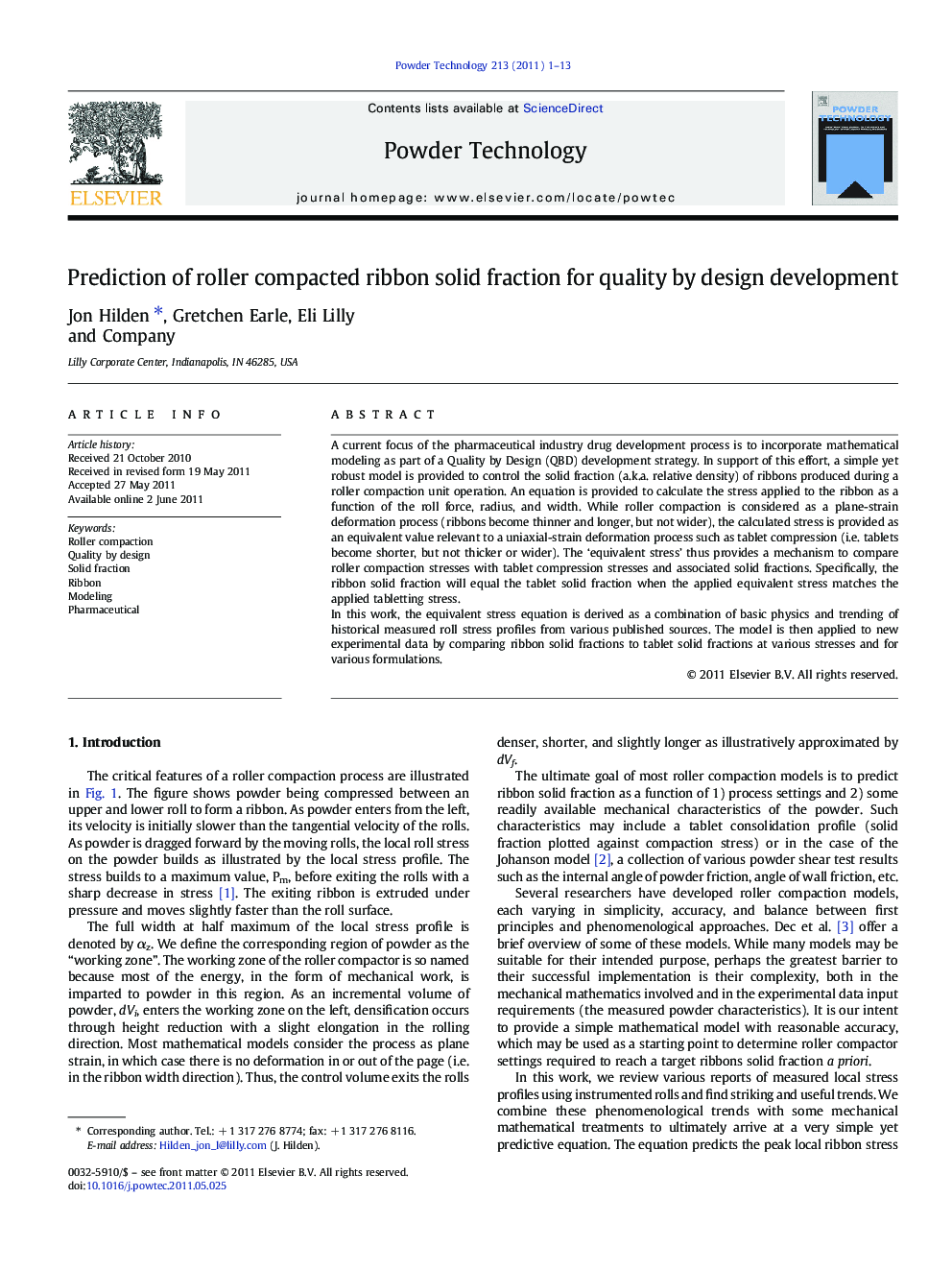| کد مقاله | کد نشریه | سال انتشار | مقاله انگلیسی | نسخه تمام متن |
|---|---|---|---|---|
| 237451 | 465708 | 2011 | 13 صفحه PDF | دانلود رایگان |

A current focus of the pharmaceutical industry drug development process is to incorporate mathematical modeling as part of a Quality by Design (QBD) development strategy. In support of this effort, a simple yet robust model is provided to control the solid fraction (a.k.a. relative density) of ribbons produced during a roller compaction unit operation. An equation is provided to calculate the stress applied to the ribbon as a function of the roll force, radius, and width. While roller compaction is considered as a plane-strain deformation process (ribbons become thinner and longer, but not wider), the calculated stress is provided as an equivalent value relevant to a uniaxial-strain deformation process such as tablet compression (i.e. tablets become shorter, but not thicker or wider). The ‘equivalent stress’ thus provides a mechanism to compare roller compaction stresses with tablet compression stresses and associated solid fractions. Specifically, the ribbon solid fraction will equal the tablet solid fraction when the applied equivalent stress matches the applied tabletting stress.In this work, the equivalent stress equation is derived as a combination of basic physics and trending of historical measured roll stress profiles from various published sources. The model is then applied to new experimental data by comparing ribbon solid fractions to tablet solid fractions at various stresses and for various formulations.
A model is provided to predict ribbon solid fraction profiles from tablet solid fraction profiles. Predictions include an estimate of roll stress and account for plane‐strain (ribbons) vs. uniaxial strain (tablets) deformation conditions. Predictions are based on observed geometric similarities of measured local roll stress profiles across metal, organic, and ceramic powders.Figure optionsDownload as PowerPoint slideHighlights
► A model is provided to predict ribbon solid fraction profiles from tablet solid fraction profiles.
► Predictions account for plane-strain (ribbons) vs. uniaxial strain (tablets) deformation conditions.
► Measured local roll stress profiles across metal, organic, and ceramic powders are geometrically similar.
Journal: Powder Technology - Volume 213, Issues 1–3, 10 November 2011, Pages 1–13